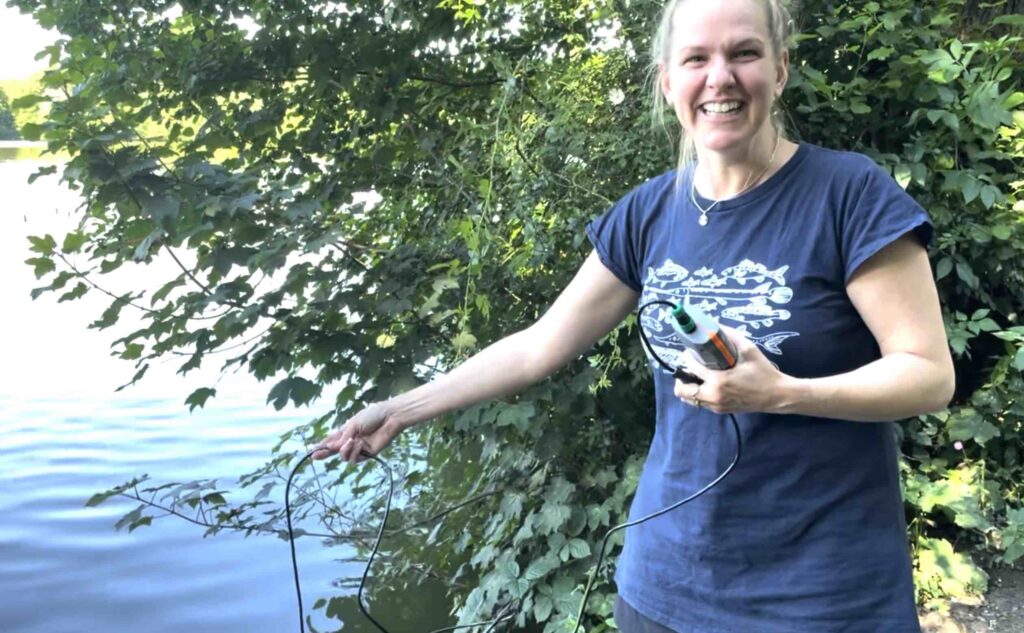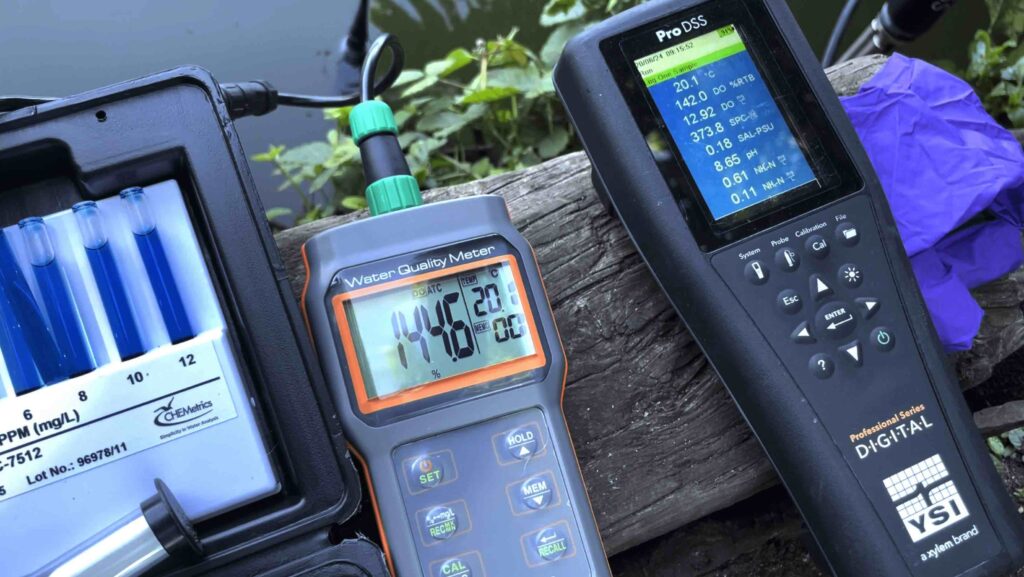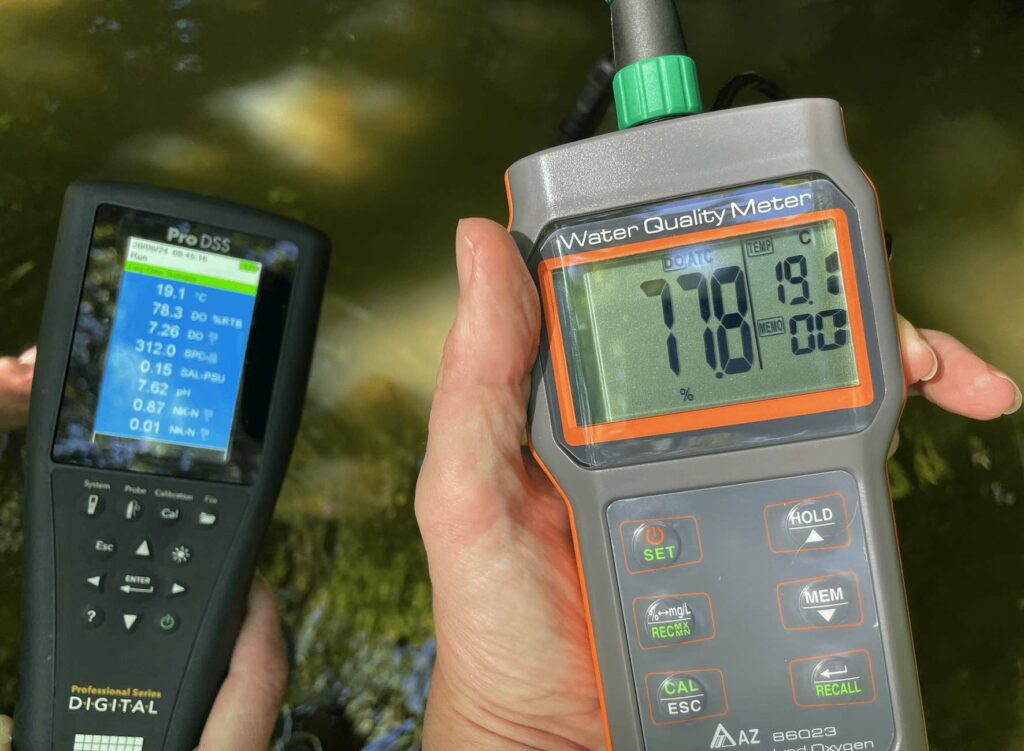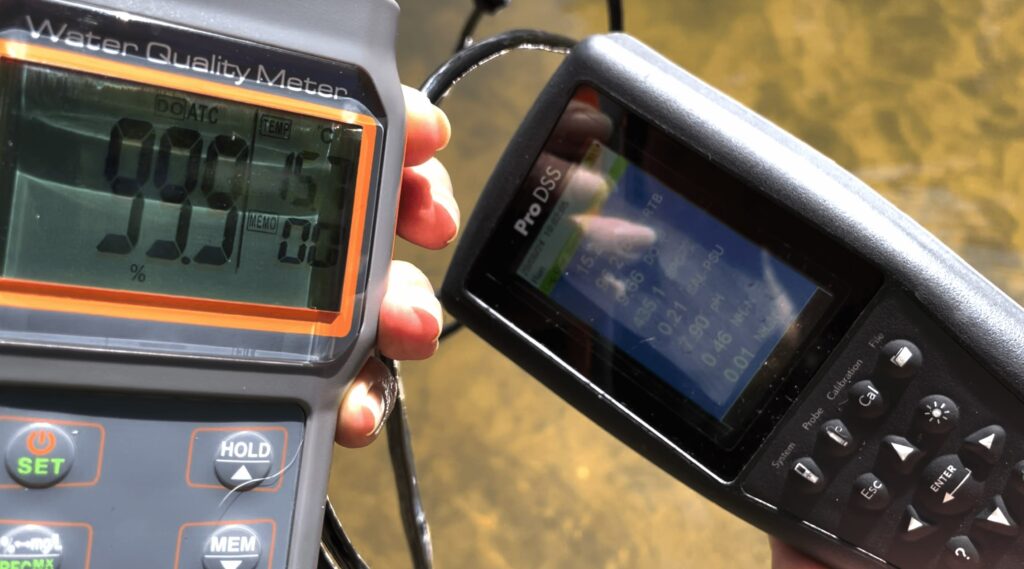This is how you DO it! Testing a new optical dissolved oxygen (DO) probe
For our community scientists, dissolved oxygen is an important parameter to monitor water health.
For most of our community-based water monitoring (CBWM) programs, our beautiful blue Chemetrics test is the best option, as it’s affordable, reliable, requires no calibration, and suits most monitoring program objectives. However, sometimes CBWM objectives requires more sophisticated and powerful tools, such as probes and sensors.
About dissolved oxygen
Read more about why and how we test on our dissolved oxygen parameter page.
To date, we haven’t included dissolved oxygen probes in our kits, largely because calibrating them was tricky. And frankly, they can be extortionately expensive. Over the years, we’ve tested a number of inexpensive DO probes. Until now, we haven’t found one that met our standards for accuracy, affordability, and ease-of-use.
That all changed on 20 June, when we went out to test a brand new tool!

Optical dissolved oxygen versus traditional probes
First on our wish list : the probe needs to be as easy to use and to calibrate as possible.
Whenever I’ve gone out with conservation authorities and other scientists, they typically calibrated their dissolved oxygen probes prior to testing excursion. There’s a good reason for this: their probes are electrochemical and are more prone to drifting results if they aren’t regularly calibrated. The electrochemical probes also tend to have a sensitive membrane that can be easily damaged.
But there are also optical probes, which don’t have the same issues with drifting results and are a lot less delicate (Here’s a more technical comparison between the two types: the science is quite interesting!). Both types of probes require calibration. However, optical probes can be calibrated less often, and we’re finding it less tricky. The optical probe still requires careful attention by a diligent tester and some calibration.
Second on our wish list : Affordability
Prices for optical probes can reach as high as+$10,000. Until we tried out the model below, the optical meters were way too expensive for us to even consider testing ourselves. Providing high-quality equipment at an affordable price means that community data is trusted. This new probe costs just $600.
Initial validation testing
We were lucky to be joined by a professional with a freshly calibrated high-end YSI meter for our comparison. I chose a local artificial lake that is prone to algal blooms, which is connected to a nearby river by a stagnant stream. This offered three different dissolved oxygen comparisons.
For the validation exercise we used both probes (YSI and Optical DO) to test for dissolved oxygen % and temperature. See the results below for the three locations.
| Calibrated YSI | WR Optical DO | Calibrated YSI | WR Optical DO | |
| DO % | DO % | Temp (°C) | Temp (°C) | |
| 1. Broadwater Lake | 142.0% | 144.6% | 20.1 | 20.1 |
| 2. Stream between lake and river | 78.3% | 77.8% | 19.1 | 19.1 |
| 3. River Wey (before stream) | 96.2% | 99.9% | 15.2 | 15.7 |
DO = Dissolved oxygen
WR= Water Rangers



The percentage (%) difference between the two is remarkable for the price point, and well within a typical error range. We’re so pleased with these initial results that we can’t wait to test more! Three data points are just the beginning of our testing for this new device.
Our partners and keen testers will now help us conduct further validation tests. Among validation activities, we’ll measure whether the probe remains accurate over time, and develop guidance for using it as part of monitoring programs. This process will also help us develop instructions for calibration and storage.
Pre-ordering the new Optical Dissolved Oxygen probe is available now.
Special thanks
As always, we are overwhelmed by the generosity of our scientific community who volunteer their time and expertise to support community science. Thank you to today’s experts and colaborators!
